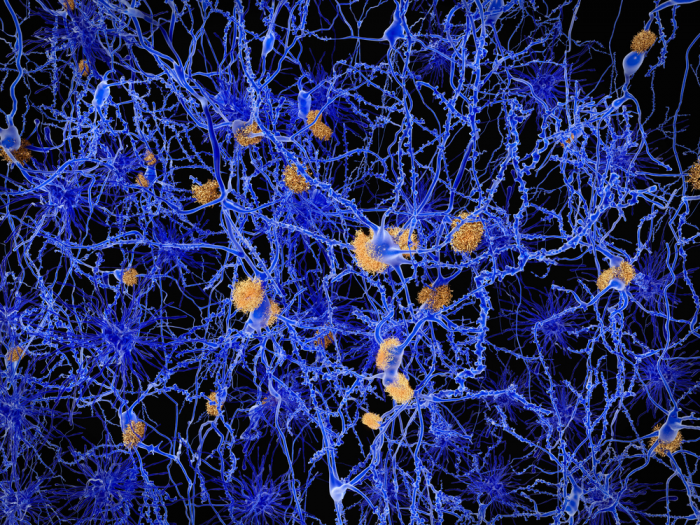Type 2 diabetes has been a growing health concern in the United States for a while now and often is caused by diet and lifestyle choices. This disease is marked by insulin resistance. You may be wondering what is insulin and what does it actually do? Well, insulin is a hormone that tells cells to take in the glucose, a sugar, from the blood and use it for energy to run other cellular processes. When the receptors on the cell membrane are resistant to insulin, the blood sugar stays high and causes the other symptoms that accompany diabetes.
Recently, researchers have found that type 2 diabetes patients also have double the risk of developing Alzheimer’s disease. They are related! How can that be? Alzheimer’s disease is a form of dementia and has nothing to do with metabolism. Actually, the connection stems from insulin signaling. Insulin in the brain acts to protect neurons and help the growth and survival of neurons along with glucose metabolism. Insulin is also important in learning because it is a regulator for GABA and AMPA receptors which are important in synaptic signaling. In Alzheimer’s disease, insulin resistance leaves neurons vulnerable.
Understanding that insulin resistance plays a part in both diseases is significant but, insulin signaling is incredibly complex in its functions. This makes it difficult to knowing what is actually leading to the impairment. Some of the mechanisms that are involved in insulin resistance are inflammation, ganglioside activity (sugars anchored in the cell membrane by lipids), regulation of mTOR signaling (pathway instrumental in cell growth and survival), and PTP1B regulation (moderates insulin signaling).
- Inflammation in both type 2 diabetes and Alzheimer’s disease is mediated by a cytokine, small protein that functions in cellular communication, called TNF-α. This particular cytokine induces inflammation and insulin resistance because it usually acts in the immune system.
- Gangliosides disrupt the insulin receptor which acts to prevent insulin from binding increasing insulin resistance.
- mTOR at increased levels leads to insulin resistance by uncoupling IR-1 and 2 which are proteins that trigger the beginning of the insulin signaling pathway in the cell. This shuts the pathway off, preventing insulin from causing a response in the cell.
- PTP1B, a protein tyrosine phosphatase, deregulates the insulin signaling pathway by deactivating IR-1 and 2. PTP1B also down regulates leptin and BDNF signaling which are important for synaptic plasticity.
Another connection to insulin resistance and the two diseases is the buildup of amyloid. In type 2 diabetes islet amyloid polypeptides (IAPP), which function as regulators for insulin and glucagon release, aggregate in the islets of Langerhans (area of pancreas that produces hormones). In Alzheimer’s, amyloid beta subunits of amyloid precursor protein aggregate into Aβ oligomers (ABO) that form Aβ plaques.

In the brain, Aβ’s cause GM3 to build up in the cell membrane which inhibits the insulin receptor. Aβ’s also act in the mTOR pathway and in inflammation, both decreasing insulin signaling.
So, why is the link between type 2 diabetes and Alzheimer’s important? The answer is treatment. Some of the diabetes treatments have shown positive results in Alzheimer’s and suggest that the mechanisms involved in these pathways may be key for future treatment.
